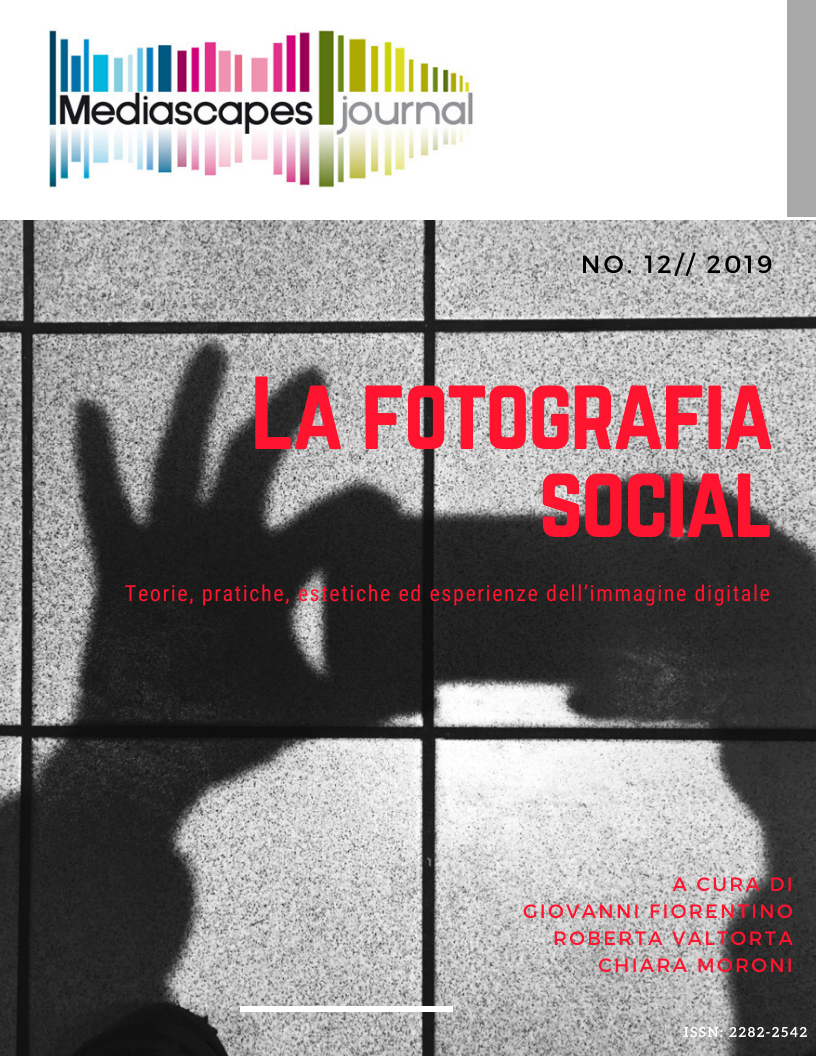“Come fare cose con le foto”. La fotografia social tra costruzione identitaria e ricerca di senso
Parole chiave:
selfie, meme, speech act, visual actAbstract
The technological daily life contributes to gradual but continuous modifications of the people’s behavior, including an incessant process of modeling and re-modeling of the self, of their communicative instances and their existence; today it is common to identify existential online modes more complex and articulated than their respective 'physical' lives. In this context of virtuality, in which the being is continuously wavering between the real world and the social environment, the image has taken on different meanings and weights compared to the traditional reading offered by Western culture. Today the image (and therefore the photograph) is a 'surplus', that has the seed of an instantaneous and involving signification, although it highlights its permanent and lasting being. In the shared space, photography can return to vogue, be filmed and re-read in different significant re-propositions and interpretations, as if inserted in a continuous process of resemantization. Thus, social practices propose a photograph that can also be configured as an innovative inguistic act, able to be one of the privileged elements (if not the main one) of the digital dialectical conversation, as evidenced by the wide use of memes and stereotyped images that virally circulate in the digital daily life. On the one hand, in fact, social photography seems to be a means through which to initiate processes of construction and reconstruction of identity (through, for example, the selfie); on the other hand, it - in its declination of meme - can become an instrument (a linguistic act) useful to forms of participatory and viral communication, as well as, in some cases, to the modeling of collectivizing lines of thought.
Starting from these assumptions and from studies of the philosophy of language, visual culture, and media anthropology, the intervention aims to highlight how users could narrate their daily life and testify their existence with images and selfies. These visual elements can also be considered a stereotyped system of collective identity to whom users can draw inspiration to their photos. But selfies could also be considered a specific modality to communicate and engage others on SNSs: in this way, users could use selfies also as linguistic and communicative acts. Thereby, starting from the Speech Acts Theory by John Austin and John Searle and from the analysis of several cases from the Net, the article presents the hypothesis that selfies and memes could be visual speech acts, as visual utterances; in this way, users could speak online through images and a multimode blocks of meaning.
##submission.downloads##
Pubblicato
Come citare
Fascicolo
Sezione
Licenza
Gli autori che pubblicano su questa rivista accettano le seguenti condizioni:
- Gli autori mantengono i diritti sulla loro opera e cedono alla rivista il diritto di prima pubblicazione dell'opera, contemporaneamente licenziata sotto una Licenza Creative Commons - Attribuzione che permette ad altri di condividere l'opera indicando la paternità intellettuale e la prima pubblicazione su questa rivista.
- Gli autori possono aderire ad altri accordi di licenza non esclusiva per la distribuzione della versione dell'opera pubblicata (es. depositarla in un archivio istituzionale o pubblicarla in una monografia), a patto di indicare che la prima pubblicazione è avvenuta su questa rivista.
- Gli autori possono diffondere la loro opera online (es. in repository istituzionali o nel loro sito web) prima e durante il processo di submission, poiché può portare a scambi produttivi e aumentare le citazioni dell'opera pubblicata (Vedi The Effect of Open Access).


